The comic-strip hero who charged into history
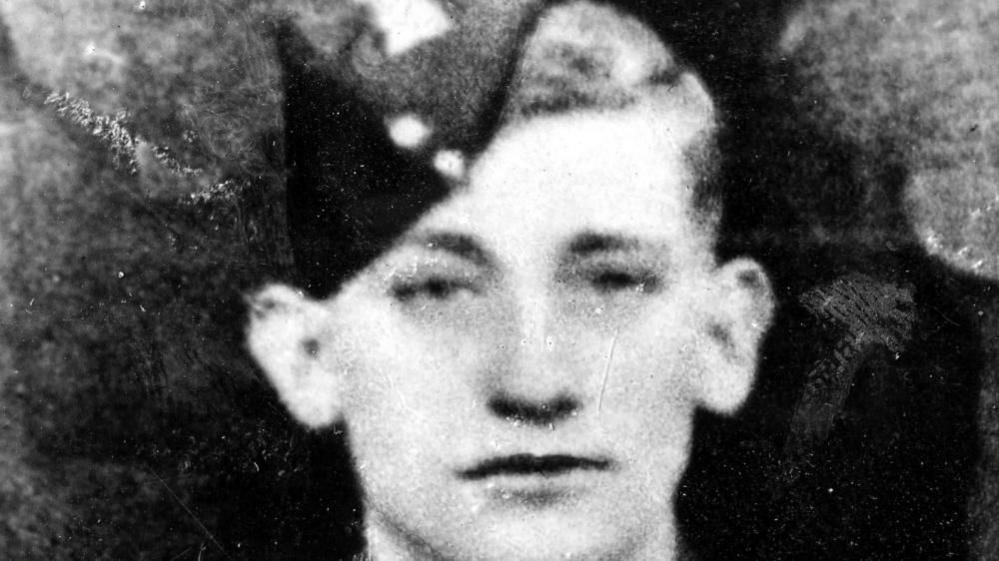
Cpl Sidney "Basher" Bates VC featured in a strip in The Victor comic
- Published
Millions around the world paused to recall the 80th anniversary of the D-Day landings on 6 June.
Politicians and the few remaining veterans gathered in France to pay tribute to those who fought and died on the Normandy beaches during World War II.
No international celebrations will be staged this week to mark the 80th anniversary of the death of the 23-year-old son of a rag-and-bone man who was born in Camberwell, south London, and fought with the Royal Norfolk Regiment.
But the name of Sidney Bates VC, a real-life comic-strip hero who made the ultimate sacrifice in a bid to protect his comrades, lives on.
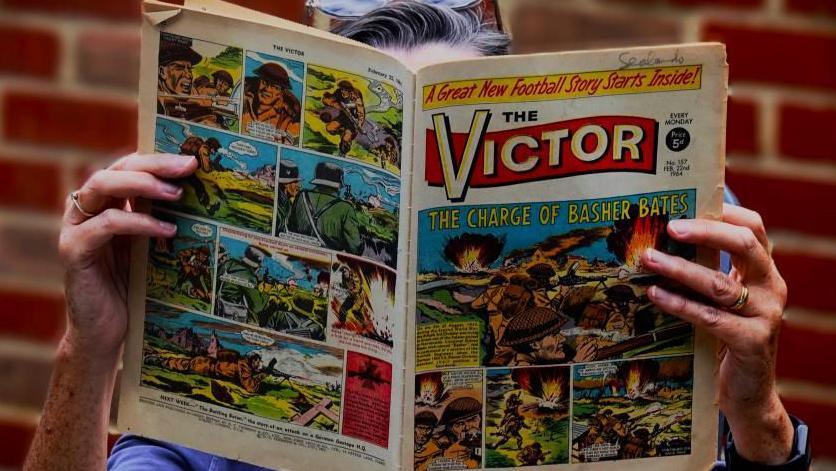
"Basher" Bates' charge was depicted in the 22 February 1964 edition of The Victor comic, printed and published by D.C.Thomson & Co and John Leng & Co
Cpl Bates, who was known as "Basher", was a member of the 1st Battalion of the Royal Norfolk Regiment and landed in Normandy, on Sword Beach, on D-Day.
He survived the initial onslaught, but there was a battle beyond D-Day, and Cpl Bates, who turned 23 on 14 June 1944, had only weeks to live.
He was wounded on 6 August 1944 when he staged a lone charge near the village of Sourdeval, dying two days later.
He was awarded a posthumous Victoria Cross (VC) in late 1944, and 20 years later became the star of one of Britain's most popular comics.
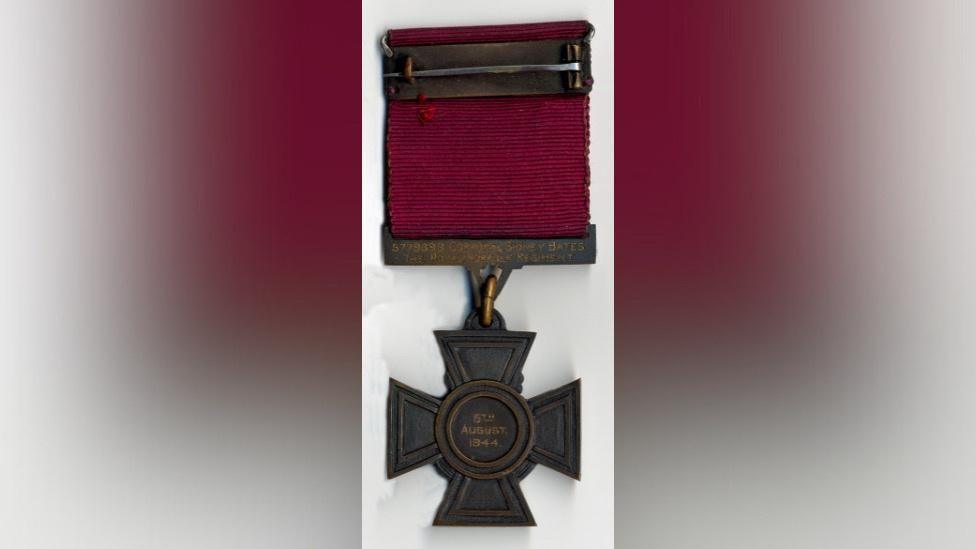
The Victoria Cross was awarded posthumously to Cpl Bates
The Victor, external, printed and published by D.C. Thomson, external & Co and John Leng & Co, told of Cpl Bates' heroism in a front- and back-page illustrated story headed, "The Charge of Basher Bates", on 22 February 1964.
It explained how Cpl Bates was in command of a section of the Norfolk Regiment as British troops tried to break out of the "Falaise pocket".
Cpl Bates charged the enemy after his friend was killed, said the strip.
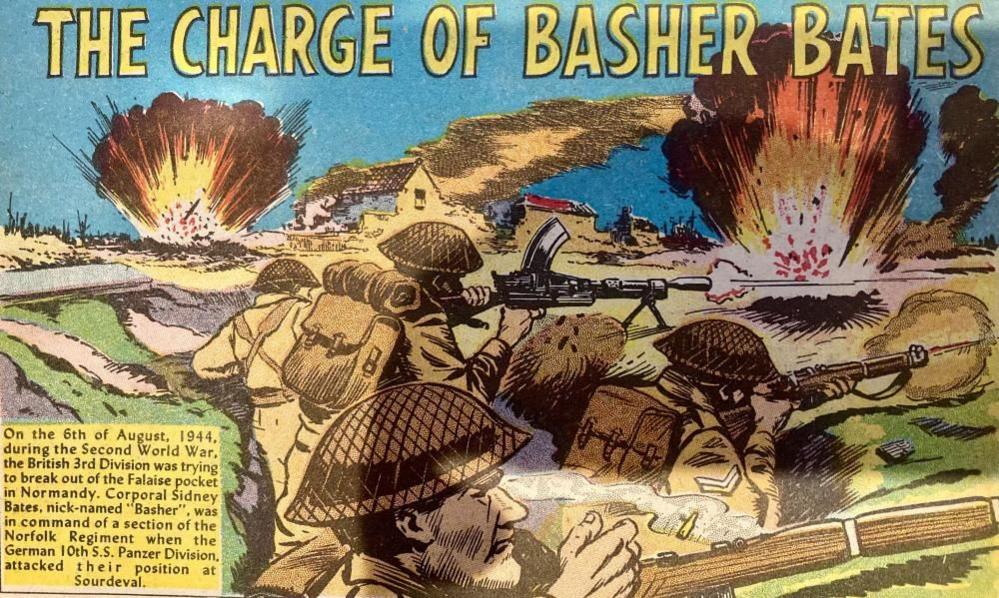
The Victor told the story of how Cpl Bates' unit came under attack
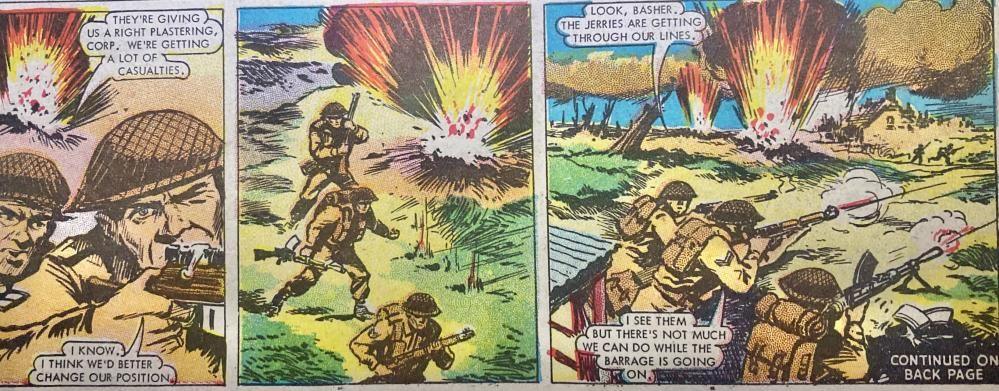
The story continues: "They're giving us a right plastering, Corp..."
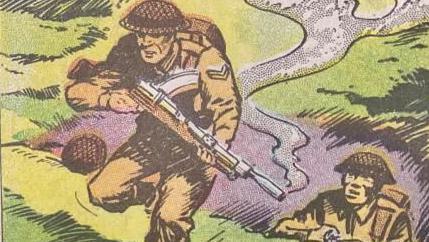
Basher Bates charges the enemy, saying: "I'll show them..."
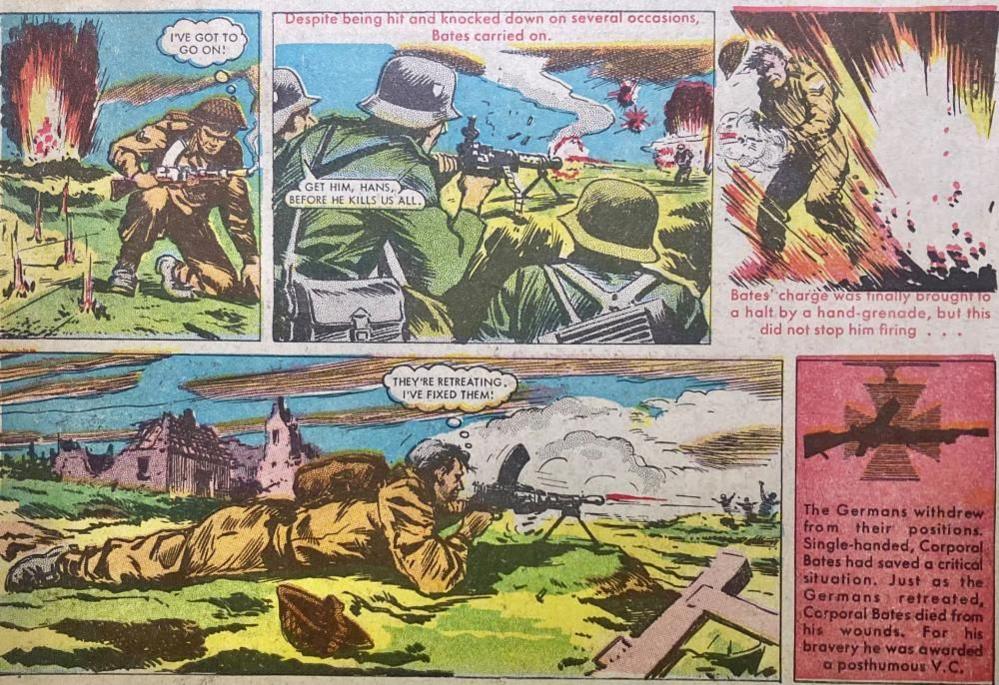
"The Germans withdrew ... Cpl Bates died from his wounds."
Cpl Bates has not been forgotten in Camberwell
Southwark Council's archivists have paid tribute in an online blog, external.
It tells how Cpl Bates was born on 14 June 1921, in Crown Street, Camberwell.
He worked as a carpenter's labourer after leaving school at 14 and joined the Army in 1940, entering the 1st Battalion Royal Norfolk Regiment.
"On 6 August 1944, the 1st Norfolks were relieving the 3rd Monmouthshire Regiment near the village of Sourdeval," says the blog.
"They were attacked in force by the 10th SS Panzer Division."
The blog adds: "Eventually, Sidney’s section came under attack by 50 to 60 Germans armed with machine guns and mortars and supported by panzers.
"(Jonathan) Tojo Tomlin, Sidney’s close friend, was the section’s Bren gunner.
"He died in Sidney’s arms, hit in the face by machine-gun fire.
"That’s when Sidney acted."
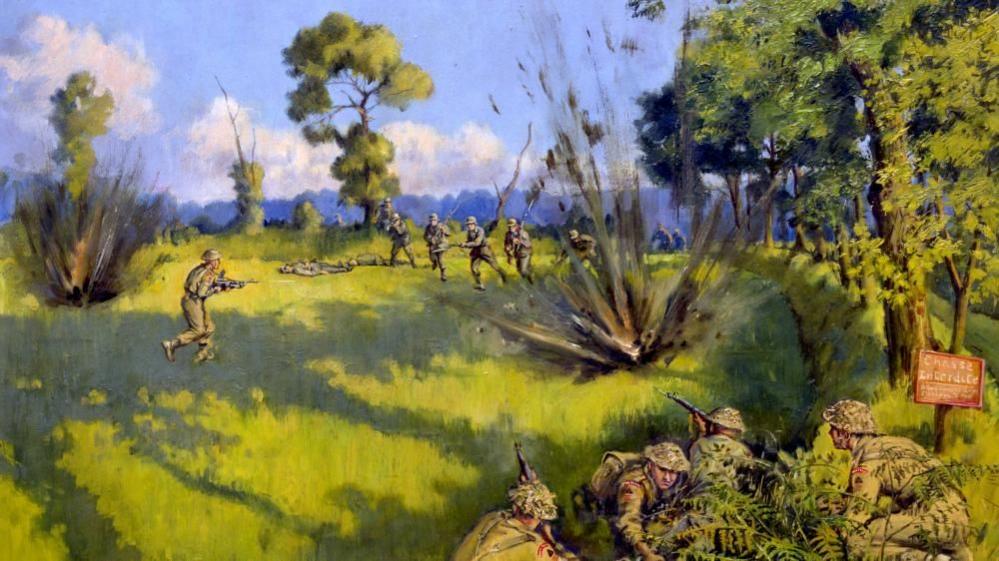
Cpl Bates' heroism in France on 6 August 1944 was depicted in a painting by Lt Col R.G.D. Hare
The blog went on: "He picked up Tojo’s Bren gun, got up, and advanced into the hail of bullets and mortars, firing from the hip.
"He was struck by machine gun fire and fell to the ground.
"He got up, and continued advancing and firing. He was hit, and got up again, twice more.
"The fourth time, Sidney was hit by mortar shrapnel.
"This time, he couldn’t get up.
"Instead, he wrapped himself around his gun, firing at the enemy for as long as his strength held out.
"But that was long enough.
"The Germans – perhaps shaken by Sidney’s determination – retreated to the sound of his gunfire, leaving the position in the hands of the British."
Get in touch
Do you have a story suggestion for Norfolk?
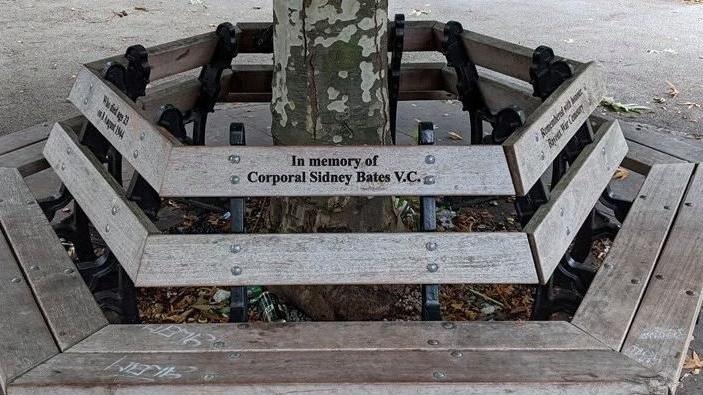
Sidney Bates is remembered on a memorial bench on Camberwell Green
The blog said Cpl Bates' grave was plot XX 14E in the Bayeux War Cemetery.
He is also remembered on a memorial bench on Camberwell Green.
Council archivist Patricia Dark said she would lay flowers at the site of the bench this week.
Follow Norfolk news on BBC Sounds, Facebook, external, Instagram, external and X, external.
Related topics
- Published14 May 2024
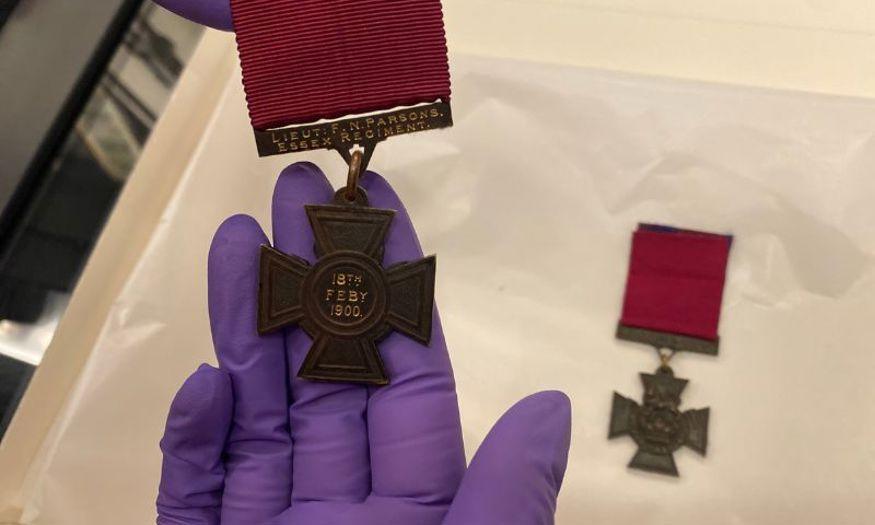
- Published6 June 2024
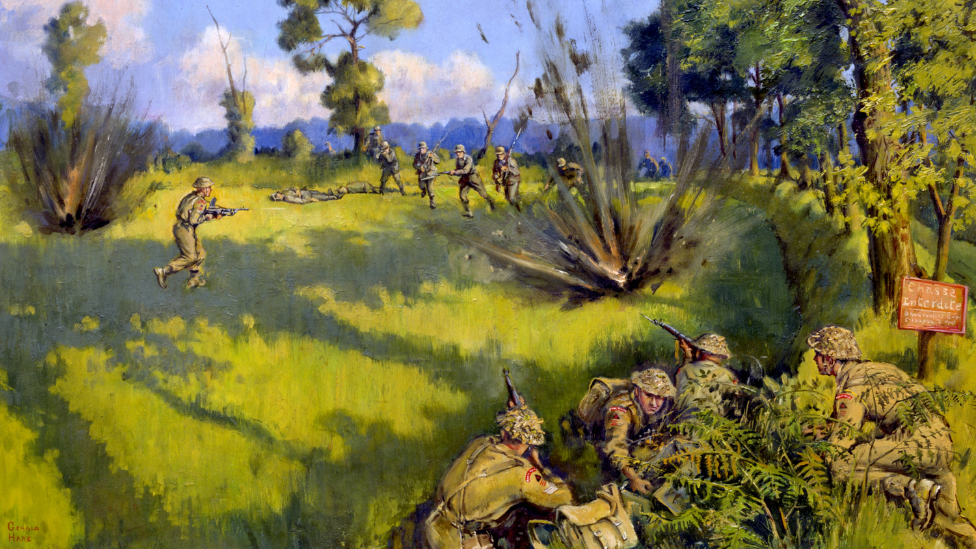
- Published6 June 2021
